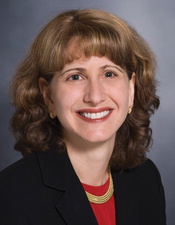 Providers are using a lot of health technology, but they aren't using enough technology to interact with patients, Boston Children's Hospital CIO Naomi Fried said at a MassTLC healthcare conference in Boston this week.
Providers are using a lot of health technology, but they aren't using enough technology to interact with patients, Boston Children's Hospital CIO Naomi Fried said at a MassTLC healthcare conference in Boston this week.
"There’s a continuum when you think about digital...pure digital vs. pure patient-doctor interaction," Fried said. "I think where we are on the spectrum right now is way too physician and nurse heavy. If you think back to a recent healthcare experience you had, I would imagine it’d be quicker, faster, having more information at your finger tips, better information. All of these things can be facilitated by digital tools."
Instead of putting technology in the hands of patients, Fried argues, this technology is given to doctors. Fried pointed to several tools that Boston Children's Hospital developed to help patients manage their health. Including a discharge communication service that sends messages to patients after they’ve visited the hospital, and sends the information back to a nurse who sees a dashboard and can selectively figure out which patients to follow up with by phone. Another app, called MyPassport, offers patients a digital framework for getting information that they want.
"MyPassport is actually a mobile app for patients admitted to the hospital and once they’re in the hospital allows them, or their parents in our case, to see what the lab results are as we make them available," Fried said. "It also shows the family everyone who is taking care of the child -- pictures of the care team along with their role and their names so [parents] can track who’s who. It shows what the care plan is because patients and families want information. They want to understand what’s going to happen. I think that we still have a long way to go in terms of leveraging tools, technology, and concepts that are available to help our patients get the information they want."
Changing or disrupting the provider workflow has always been a big barrier for new healthcare technologies.
"We have always been a brick and mortar industry, we have always been a physician-centered industry. The idea that we’re going to have a paradigm shift, we’re going to think differently, provide care differently, is uncomfortable to people," Fried said. "Even though there are many benefits we can imagine to getting there, it’s not easy to make that shift."
Fried identified three factors that would help create a culture of innovation: securing resources, accepting failure, and encouraging innovators.
"It’s really hard to innovate in the absence of getting time, getting money, getting space, and getting support," Fried said. "So I think putting some energy into resourcing innovators can help get the culture moving."
As for accepting failure, Fried explains that it's really important to create an environment where risk is welcome and accepted.
"Innovation is fundamentally a risky process," she said. "A lot of what you do doesn’t work out. Failure is a common part of the innovation process. So creating an environment where risk is welcome, failure is acceptable — where failure is really seen as a learning opportunity -- [that] opens up the environment, opens up the culture, makes people feel comfortable to innovate."
Third third factor, Fried said, is recognizing that innovation is hard and that it's important to encourage innovators to create new products. The way to do that, she explains, is by recognizing them, acknowledging their work, and appreciating that they are innovators. At Boston Children's, Fried said, the hospital makes a concerted to recognize and appreciate innovators."
In the future, Fried added that healthcare will look markedly different. Instead of going to brick and mortar providers people are going to be more digitally enabled.

















